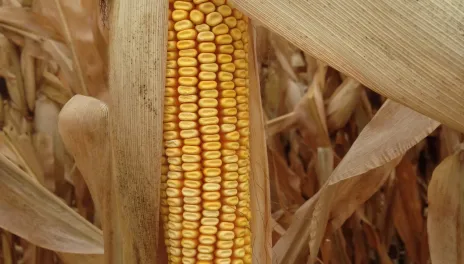Update on Carrington REC Corn Fertilizer Research: Phosphorus and Zinc
NDSU recommends starter phosphorus (P) fertilizer for corn, regardless of P soil level. Starter fertilizer application is defined as either placing in-furrow (IF) or within 2 inches of corn seed during planting, with typical rates of 10-34-0 at 3 gpa. P starter fertilizer provides the potential to increase early season plant growth by increasing nutrient uptake, and ultimately increase grain yield. Starter fertilizer will not satisfy total P needs of corn with soils testing less than medium for P (<8 ppm; Olsen test), thus supplemental P fertilizer (broadcast or deep-band application) would be recommended. Corn is expected to respond to zinc (Zn) fertilizer if soils levels are below 1 ppm. Zn may be applied as preplant broadcast, starter or foliar. P and Zn fertilizer rate recommendations are in the NDSU Extension publication SF 722 Soil Fertility Recommendations for Corn.
The Carrington Research Extension Center began a corn field study in 2007 to document response to starter P fertilizer, primarily using 10-34-0 with various application methods and rates on loam soil generally testing medium or less for P. The following is a summary of corn grain yield results across site-years:
- Corn grain yield was similar with band- or IF-applied 10-34-0 (2.5-6 gpa), and starter fertilizer increased yield 4-5%, compared with the untreated check (8 site-years).
- Yield was similar between the 3- and 6-gpa rates of IF-applied 10-34-0 (6 site-years).
- Yield did not improve with a split application of 10-34-0 using band plus IF placement, compared with similar rates of only band- or IF-applied fertilizer (3 site-years).
- Deep-band (5 to 6 inches deep, fall or spring placed) or deep-band plus IF-applied 10-34-0 had similar yield as the planting-time band-applied fertilizer (3 site-years).
- Yield was similar between IF-applied 10-34-0 and the low-salt fertilizer 6-24-6 at similar P rates (3 site-years).
- Yield was similar between IF- and soil-surface-applied 10-34-0 (rain totaling >0.3 inches for incorporation of surface-applied fertilizer was delayed >5 days after application among years; 4 site-years).
In 2016, the research focus transitioned to tests with Zn (preplant incorporated [PPI], IF and foliar applications) and specialty fertilizers compared to IF-applied 10-34-0 at 2.5-3 gpa in soil with P levels at <8 ppm and Zn at <0.65 ppm. The following is a summary of yield results using multi-year means through 2022:
- IF 10-34-0 (2.75 gpa) plus Zn chelate (0.25 gpa) was 6-7% greater than sole 10-34-0 or the untreated check (5 site-years).
- IF 10-34-0 plus Zn chelate was 4% greater than 10-34-0 followed by foliar-applied Zn chelate (applied at V4-7 growth stages; 5 site-years).
- PPI MESZ (MicroEssentials SZ [12-40-0-10S-1Zn]; Mosaic) or PPI triple super phosphate plus ammonium sulfate (S) plus ZnS (both treatments containing similar amounts of P, S and Zn on a plant food basis) followed by IF 10-34-0 (3 gpa) increased 15-17% compared to the untreated check (4 site-years.
- IF 10-34-0 plus Zn chelate was 3% greater than IF RiseR (7-17-3-0.95Zn; Loveland Products) at 2.5 gpa (3 site-years).
Neither NDSU Extension nor NDSU Agricultural Experiment Station endorses commercial products or companies even though reference may be made to trade names, trademarks or service names.
Greg Endres
Gregory.Endres@ndsu.edu
Extension Cropping Systems Specialist

